Answers and Insights to our 3rd Photo Challenge
Answers and Insights to 5 London Landmarks.
Thank you to those of you who tried to identify these items and congratulations to those who were successful. Below you will find the ‘official’ answer and some insight into these places. I hope you find some interesting facts you didn’t know!
(1) This sculpture, titled “Breathing”, is by Spanish artist Jaume Plensas and sits atop the Peel wing of the new BBC Broadcasting House in central London. It is a memorial to journalists killed while doing their work and was specially commissioned and selected as a result of an international competition. It is dedicated to all news journalists and those who have worked with them, including drivers and translators. The glass sculpture is etched by the artist with this spiral of text: “life turns and turns on the crystal glass / breathing in our body/ silence is a voice, our voice / silence is a body, our body / life turns and turns on the crystal glass / breathing in our body / I invite you to breathe / I invite you to listen to the silence”
The BBC also commissioned a poem to complement the structure by ex-war correspondent and poet, James Fenton, titled “Memorial”
Unveiled by UN Secretary General Ban Ki-moon on 16-June-2008, this 10m (32ft) glass and steel cone is illuminated at night and it shines a beam of light into the sky at the start of the BBC 10 o’clock evening news. This beam of light reaches up 900 metres and lasts for 30 minutes. This shaft of light serves to remind us of the sacrifices journalists take to bring us the news. With 1069 journalists killed since 1992 (source: cpj.org) it is an important memorial.
(2) Located on the South Bank outside the National Theatre is this statue of Sir Laurence Olivier. Now just over 50 years old, the National Theatre Company opened at the Old Vic on 22 October 1963. Its founding artistic director was Laurence Olivier who remained in that post until his retirement in 1974. While the National Theatre performed at the Old Vic during all of Olivier’s time there, it moved to this location in 1976. Recognizing his leadership with the NT and his overall contribution to British performing arts a memorial statue is certainly warranted and thus this location is very apt. With a current £80m redevelopment underway called NT Future the National Theatre should continue to be a premier venue for years to come.
(3) This little hut is in the centre of Soho Park. While the park was laid out in the 17th Century, this building is from the early 20th Century. Known as the ‘Gardener’s Hut’ its primary purpose is a little more obscure and has suffered from rumours over the years, including that you could access secret tunnels that led to Buckingham Palace. Since the building became a Grade II listed structure in February 1992 its purpose became more ‘official’. Described by English Heritage as a ‘timber framed arbor/tool shed’ it was actually built circa 1925- 26 by “Messrs J. Strutt & Co, 27 Endell Street for the Charing Cross Electricity Company as a disguise for an electricity sub-station”. So myths aside, it is an attractive folly to hide an entrance to an old power station!
(4) The clue said this was a ‘storied’ park and it is - as it contains some of the most amazing tales of heroism on the array of ceramic tiles in a covered loggia. This is “Postman’s Park”, located just north of St. Paul’s near the intersection of St Martin’s Le-Grand and Little Britain. If you have not been this is a ‘must-visit’ location. It is known as Postman’s Park because the original headquarters of the General Post Office (GPO) were located adjacent to this park on both sides of St Martins Le-Grand. Buildings were demolished over time and ultimately the GPO was dissolved with its assets transferred to the Post Office. In the 1980s telecom and postal services were split, and the legacy of the GPO continues as BT’s headquarters are just south of the park in the old Telegraph Office building.
In 1900 this park became home to the Watt’s Memorial to Heroic Self Sacrifice when the Vicar of St Botolph’s Aldersgate (on whose land the park was built) partnered with Watt’s to install the memorial on this site. The Vicar’s goal was to raise the profile of the park with the hope that this could raise funds for the church. The first tile tablet installed in 1900 reads “Thomas Griffin, Fitters Labourer, April 12, 1899, In a boiler explosion at a Battersea sugar refinery was fatally scalded in returning to search for his mate”. There are a total of 54 tablets and now all of these heroic stories can be found on a free mobile app titled “Everyday Heroes” (go to postmanspark.org.uk ). The app is really clever as you can use it while you are visiting - by running the app you can point your camera at any of the tiles and it will tell you more about that person. You can also use the app off-site.
(5) This magnificent building is the ‘Discover Greenwich Visitor Centre’ at the Old Royal Naval College. The building was restored and reopened in 2010. Known as the “Pepys Building” it was originally designed for use as racquet courts for naval officers in 1874. In 1905, it was converted to become the main mechanical engineering laboratory of the Royal Naval College. The industrial feel of the interior has been preserved, with heavy beams and a gantry crane reminding us of its former use. Given its original purpose the exterior of the building is rather ornate with classical columns and roundels containing busts of naval heroes such as Drake, Cook and Nelson. As one of only four UNESCO World Heritage sites in London, “Maritime Greenwich” (placed on the list in 1997) is always worth a visit. If you haven’t been here since the renovations then it’s time for a visit whether to see the architecture or enjoy the permanent exhibits. Open daily 10am-5pm.
13 comments on “Answers and Insights to our 3rd Photo Challenge”
Leave a Reply
Recommended reading
- Migliori Casino Online
- Migliori Casino Online
- Casino Non Aams Italia
- Casinos Not On Gamstop
- UK Online Casinos Not On Gamstop
- Casino Sites Not On Gamstop
- Casino Sites Not On Gamstop
- Non Gamstop Casino
- Casinos Not On Gamstop
- Non Gamstop Casinos UK
- Best Non Gamstop Casinos
- Meilleur Casino En Ligne France
- Non-gamstop UK Casinos
- UK Gambling Sites Not On Gamstop
- Casino Sites In UK
- Casinos Not On Gamstop
- Non Gamstop Casinos
- Sites Not On Gamstop
- Meilleur Site De Casino En Ligne
- Casino En Ligne Fiable
- Non Gamstop Casinos
- UK Betting Sites
- Non Gamstop Casino Sites UK
- Non Gamstop Casino UK
- Casino Online Non Aams
- Casino Non Aams Sicuri
- Sites De Paris Sportifs En Belgique
- Meilleur Casino Belgique En Ligne
- Casino En Ligne
- 비트코인 베팅사이트

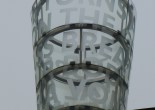

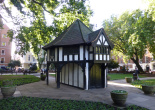
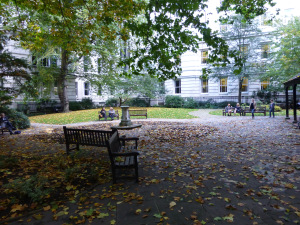
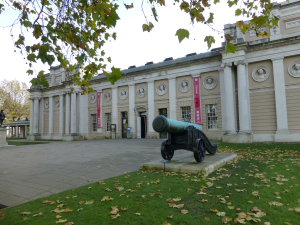

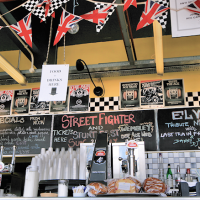
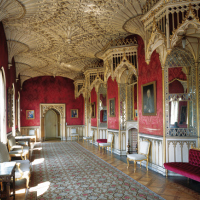

Great information! Thanks for clearing up the mystery of of hut in Soho Park ~ what a beautiful way to disguise an electric sub-station.
Agreed. Another place that is similar in concept is Brown Hart Gardens . All the best, Ian
And thanks for info about Postman’s Park. I know there area but I’ve never stumbled across it. Must check it out soon. Great post. Thanks.
Certainly worth a visit. Thanks for reading my posts and commenting, Ian.
Another interesting post in your excellent London Unveiled Blog. Thanks! Are you able to reveal your sources regarding the Soho Square building? I’ve read that it was always a simple shed, and that the electricity sub-station story is a myth. I’d very much like to know one way or the other. Many thanks - Duncan Smith
This link takes you to the official English Heritage listing for the site. As a Grade II listed English Heritage building, they certainly do their research. Hope this helps you dispel the ‘myth’.. though the link to Buckingham Palace is definitely false! http://list.english-heritage.org.uk/resultsingle.aspx?uid=1249910
All the best, Ian
Dear Ian - Very many thanks for clearing this up for me. I’m researching a new guidebook for London and want to get my facts straight. I will, of course, give London Unveiled a decent plug! All the best to you and keep up the good work - Duncan
Speaking of rumors, I also heard that the statue of Laurence Olivier may be moved. Is there any truth to this, and if so, where would the planned new site be?
While the NT initially applied to Lambeth Council for permission to move the statue to the Olivier Stalls Terrace (to be unveiled as part of the NT Future program), they have now revoked that request. It will stay where it is.
Excellent and thank you so much for the information!
Reblogged this on mapsworldwide blog and commented:
I didn’t know that!
This was a brilliant blog! Love these landmarks. Soho Park I knew - and I’m glad you drew attention to it - while the other places are all ones I would now like to visit. Thanks Ian :-)
Thanks Anthony - I appreciate the positive feedback. All the best, Ian